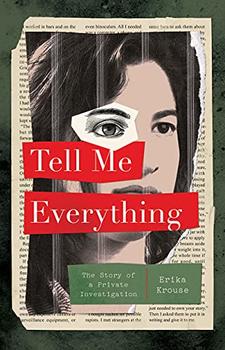Book Club Discussion Questions
Please be aware that this discussion guide will contain spoilers!
- While Leonardo's Swans is written from the points of view of the Este
sisters, each chapter begins with an excerpt from the actual notebooks
of Leonardo da Vinci, who is a pivotal character. How did the portrayal
of Leonardo change your opinion of this iconic artist? Were you aware of
the breadth of his work, which included weaponry design, anatomy,
sculpture, and machinery?
- Leonardo's challenges as a genius with a
great vision and also a human being who needs to pay his bills and feed
his dependents is explored throughout the novel. Did the fact that this
great man was plagued by so many ordinary woes surprise you? Is his
situation different from the artist's plight today? Did his problems
change your opinion about, or shed light upon, the struggles facing any
contemporary artists that you might know?
- The novel explores the eternal relationship between art and power.
What is created and what survives is a direct result of who is in power
and who is controlling the purse strings. Leonardo's most famous
paintings were commissioned by his patrons. Other works were not
executed because of both war and whim. How does this theme continue to
play out in our own culture? Did you make the connection between, say,
the destruction of the colossal Buddhas in Afghanistan by the Taliban
and Leonardo's bronze for his colossal horse sculpture being shipped
away to make cannons? Or the French soldiers destroying the clay
sculpture after the fall of Milan? What works of art have been
commissioned with public money in your community? Do you think they
reflect the vision of the artist or the vision of those who commissioned
them?
- Isabella d'Este was obsessed with being immortalized by the great
artists of her day. What would be a parallel in our own society? Is
today's quest for publicity and self-promotion the same instinct? How do
today's power players seek immortality through art and architecture?
- Beatrice and Isabella d'Este were mere teenagers when they married
and took their positions as co-rulers of great Italian city-states. If
they were alive today, they would have been in high school instead of
administering huge and complex governments. It is unimaginable that
seventeen year-old girls would control treasuries, hear pleas from
members of the community and decide resolutions, or commission works of
art from great masters. How has our idea of adolescence and womanhood
changed over the centuries? Do you think this is a positive or negative
evolution?
- The portrayal of the Este sisters accurately reflects their roles
in their communities. Were you surprised that young women wielded such
enormous power and influence during the Renaissance? Why is it that
women of power are generally left out of the history books? Is all
women's history hidden history? Do you think that today's young girls
would be enriched by learning about the stories of these extraordinary
women of the past?
- The timing of Isabella's marriage proposal from Francesco Gonzaga
prevented her from marrying the man who might have been her true soul
mate, Ludovico Sforza, Duke of Milan. Could history have been changed if
Ludovico had been subject to Isabella's stronger control? Do you think
that if the marriages had been reversed and Beatrice would have wed
Francesco, the outcome for both sisters–indeed, the outcome for the
duchy of Milan–would have been more successful?
- Isabella d'Este's superior survival skills enabled her to weather
the constantly changing political loyalties of her contemporaries, even
those in her own family. She went on to become a great collector and
patron of the arts and a strong political influence in Italy and beyond.
Did she emerge as your favorite character, or did you have more sympathy
for Beatrice? Is survival the most important goal after all? Do you
think Isabella might have paid a price for "winning?"
- Each chapter of Leonardo's Swans is entitled with the name
of a tarot card. The tarot deck was invented at the court of Milan and
painted most famously by the artist Bonifacio Bembo. The cards reflected
the nature of other playing cards of the day and were used to play a
Game of Triumphs, or trumps, as is referred to in the novel. Beatrice,
in fact, did excel at this game. Do you see the correlation between the
tarot cards and the events of the chapters? Do you agree, along with
Isabella, that la Fortuna, or the Wheel of Fortune, has a hand in human
events?
- Leonardo da Vinci was recognized in his own time as an innovator
and a genius. To put it in contemporary terminology, he was one of the
"rock stars" of his day, owing solely to his talent. Has the power of
fine art such as painting and sculpture been reduced by the advent of
television, video, cinema, and other alternative art forms and media?
How important is it to preserve and support the fine arts?
Unless otherwise stated, this discussion guide is reprinted with the permission of Broadway Books.
Any page references refer to a USA edition of the book, usually the trade paperback version, and may vary in other editions.




